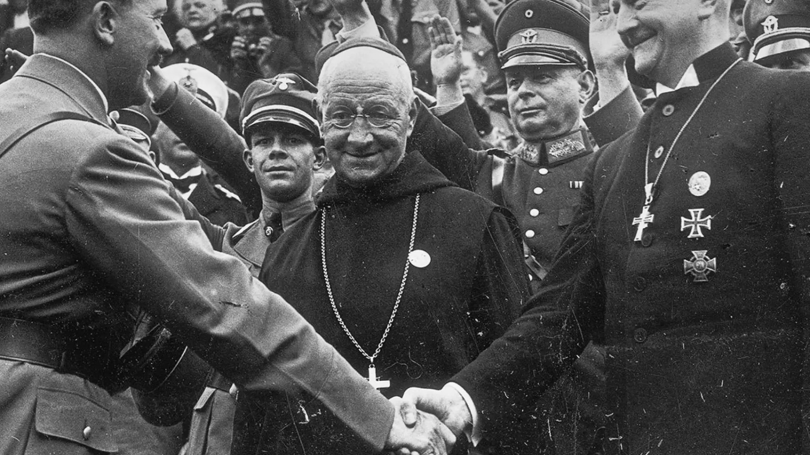
- Undergraduate
- Research
- Foreign Study
- Inclusivity
- News & Events
- People
Back to Top Nav
Back to Top Nav
In the above photograph, German Chancellor Adolf Hitler (on left) greets Roman Catholic Abbot Albanus Schachleiter and Protestant Reichsbischof Ludwig Müller, outside the Frauenkirche in Nuremberg in September 1934 (Courtesy Wikipedia). Professor Udi Greenberg explains how facism led to alliances between Europe's most infamous historical rivals:
"For more than four centuries, the enmity between Catholics and Protestants, known to theologians as the two confessions, had been one of the organising principles of European life. But, then, it stopped.
To grasp just how revolutionary this inter-Christian peace was, it's worth remembering what came before it. Because the mutual hatred between the confessions shaped not only the early modern era, when gruesome acts of violence like St Bartholomew's Day (1572) and the Thirty Years' War (1618-48) tore Europe apart. Anti-Catholicism and anti-Protestantism remained powerful forces well into the late 19th and early 20th centuries, and shaped social and political life. The most extreme case was Germany, where the Protestant majority in 1871 unleashed an aggressive campaign of persecution against the Catholic minority. For seven years, state authorities expelled Catholic orders, took over Catholic educational institutions, and censored Catholic publications.
In the Netherlands, Protestant crowds violently attacked Catholic processions; in Austria, a popular movement called 'Away from Rome' began a (failed) campaign in 1897 to eradicate Catholicism through mass conversion. Catholics, for their part, were just as hostile to Protestants. In France, Catholic magazines and sermons blamed Protestants for treason, some even called for stripping them of citizenship. Business associations, labour unions and even marching bands were often divided across confessional lines.
Even on an everyday level, it still was common into the 20th century for neighbourhoods, parties and magazines to be strictly Catholic or Protestant. Prominent politicians and lay writers routinely blamed the other confession for backwardness, subversion and sexual perversity. A prominent German historian even claimed, in the 1860s, that Catholics and Protestants were descendants of different races.
But then, by the 1950s, this mutual disdain ended. The two confessions reconciled, lay leaders established joint organisations, and politicians even founded powerful interconfessional political parties. Even Church authorities, who for a while dragged their feet, ultimately came around. The Catholic Church, during the Second Vatican Council, officially declared in 1964 that Protestants were not heretics, but brethren in faith. Only in Northern Ireland did anti-Catholicism and anti-Protestantism remain powerful, a remarkable exception that proved the rule.
How did this shocking change come about? After four centuries of division, why did old animosities die so quickly?"